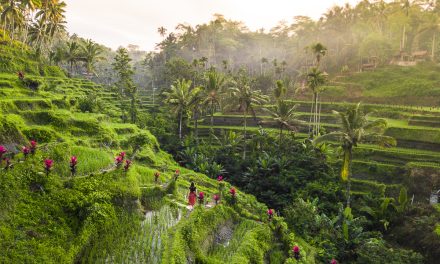Nestled on Bali’s southwestern coast, Tanah Lot is more than just a picturesque sea temple; it is a treasure trove of biodiversity and a pivotal area for environmental conservation. As I strolled along the rocky shore on my most recent visit, the sound of crashing waves seemed to resonate with not only the beauty of the landscape but also the importance of preserving this natural habitat. Join me as we explore the efforts of environmental conservation around Tanah Lot and how we can each play a part in protecting this gem.
The Significance of Tanah Lot
Tanah Lot is renowned for its stunning views and cultural significance, but it is also a vital ecosystem. The surrounding waters are home to an array of marine life, while the coastal cliffs provide refuge for various bird species. During my visit, I was fortunate enough to spot a flock of majestic egrets soaring above the cliffs, a sight that reminded me of the delicate balance we must maintain between nature and tourism.
However, this balance is in jeopardy. With rising tourism—people flocking to Tanah Lot for its breathtaking sunsets—there’s increased pressure on the local environment. Many visitors, including myself, often overlook the impact our presence has on these natural habitats.
Local Conservation Efforts
Fortunately, local organizations have recognized the need for conservation around Tanah Lot. During my trip, I learned about some of these dedicated groups working tirelessly to protect the area. One such initiative focuses on conserving the coral reefs nearby, which play a crucial role in maintaining the marine biodiversity that draws many visitors. The locals are actively involved in programs to rehabilitate coral, organizing community events where people can learn about the importance of these ecosystems.
Imagine being part of a group, agilely donning snorkels and fins, and plunging into the crystal-clear waters of Bali. There we were, on a mission not just for leisure but for the noble cause of coral planting! It was a simple yet profound experience that deepened my connection to the ocean and highlighted the critical role we all play in environmental stewardship.
Protecting Marine Life
While snorkeling at Tanah Lot, I encountered vibrant schools of fish darting between the corals, a breathtaking reminder of the ocean’s beauty. Yet, the reality is many marine species are threatened by pollution and overfishing. Simple changes in our behavior can make a significant impact. For instance, I was amazed to learn how single-use plastics are one of the biggest culprits in harming marine environments.
So, what can we do? Here’s a challenge: When visiting places like Tanah Lot, bring a reusable water bottle and snacks in eco-friendly packaging. I started doing this and noticed not only was I reducing waste, but I also felt good knowing I was leaving a lighter footprint on this beautiful location.
Get Involved
During my exploration, I discovered opportunities to volunteer with organizations focused on the conservation of Tanah Lot’s environment. Many of these groups welcome help from visitors, providing a chance to give back while learning more about local conservation efforts. Imagine spending a day with other volunteers, picking up litter along the beach or participating in awareness campaigns about the importance of protecting our oceans. These are experiences I cherish—great stories to tell friends back home!
Supporting Local Initiatives
Another way to contribute is by supporting local businesses that prioritize sustainability. Many restaurants near Tanah Lot emphasize the use of locally sourced, organic ingredients. Not only does this reduce the carbon footprint involved in transporting food, but it also supports the local economy. I had an unforgettable meal at a quaint eatery that sourced all its vegetables from nearby farms. It was delicious, and the experience felt even more rewarding knowing I was supporting the community.
Leaving a Legacy
Conservation isn’t just about stopping harmful practices; it’s also about creating a sustainable future. The Balinese people have a deep-rooted cultural connection to nature, often expressed through rituals and beliefs that honor environmental harmony. We can learn from their example. When wandering the serene pathways near Tanah Lot, I couldn’t help but admire the lush rice paddies. The locals practice traditional farming methods that emphasize sustainability and respect for the earth.
When I returned home, I committed myself to engage more actively in my community’s conservation efforts. Whether organizing a neighborhood cleanup or participating in local sustainability workshops, every small action counts. Sharing these experiences, just like I’m sharing them with you now, is vital in creating awareness and inspiring others to take action as well.
Conclusion
Environmental conservation around Tanah Lot isn’t just a responsibility—it’s a privilege. The beauty of this area is a testament to nature’s resilience, but it will take our collective effort to ensure it thrives for generations to come. So, the next time you find yourself enjoying the spectacular sunsets of Tanah Lot, remember that you are part of a larger story—the story of our planet and its protection. Let’s be the ones who leave it better than we found it!






